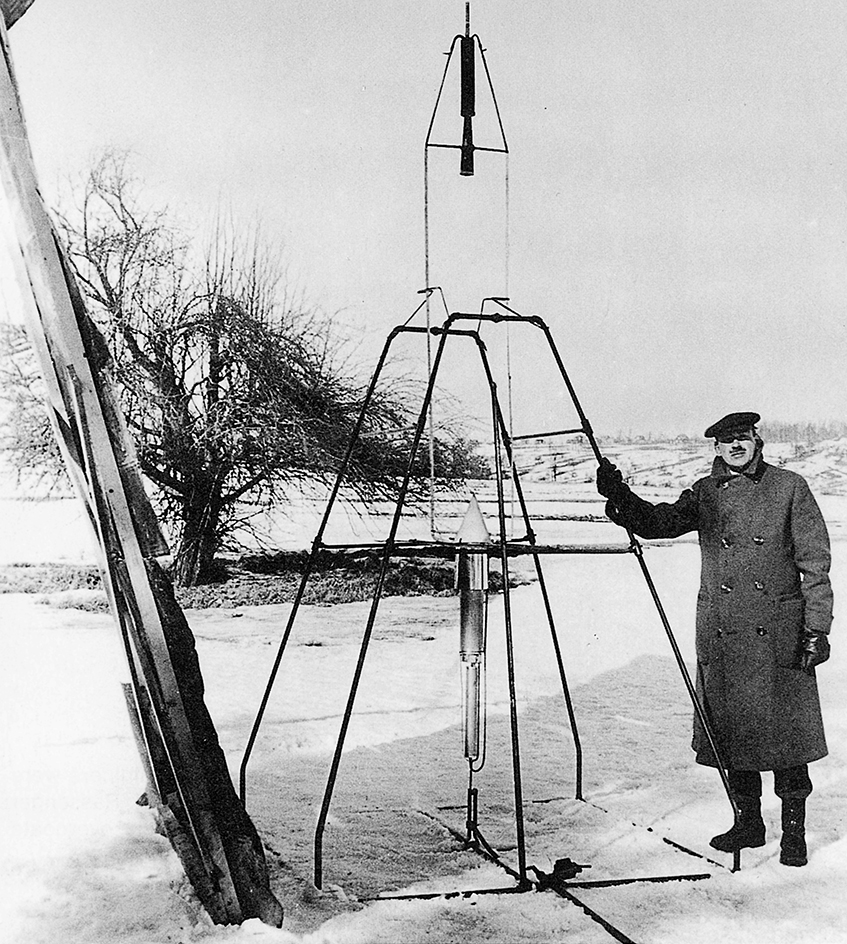Goddard, Robert Hutchings (1882-1945), was an American pioneer of rocket science. He experimented with solid- and liquid-propellant rockets between 1909 and 1945. His experiments led to the development of powerful boosters for intercontinental missiles and for spacecraft. Goddard’s achievements in the field of rocketry were not fully appreciated until after his death.

Goddard was born in Worcester, Massachusetts, on Oct. 5, 1882. He enrolled at Worcester Polytechnic Institute. While a student there, he began to analyze the possibilities of rocket flight. Goddard received a Ph.D. degree from Clark University in 1911. He joined the physics faculty at Clark in 1914.
Goddard received modest support for his research from the Smithsonian Institution. In 1919, his classic report, “A Method of Reaching Extreme Altitudes,” was published in the Smithsonian Miscellaneous Collections. In the article, Goddard described the kind of rocket flight necessary to reach the moon. The article met with skeptical comments by the press. As a result, Goddard avoided further publicity. He continued his work in relative anonymity. But he received enough research funding to design and build the world’s first liquid-propellant rocket. He launched it from the farm of a relative, near Auburn, Massachusetts, in 1926. This success brought Goddard additional funding.
In the 1930’s, Goddard launched larger liquid-fueled rockets. He also made fundamental contributions to developments in propellant pumps, gyroscopic controls, and gimbal systems. During World War II (1939-1945), he conducted research for the U.S. Navy on rocket motors. The motors would have been used for the jet-assisted take-off of aircraft.
Goddard died on Aug. 10, 1945. After his death, he was given many awards and honors. They included the Congressional Gold Medal and the Langley Gold Medal.
See also Rocket (Rockets of the early 1900’s) .
